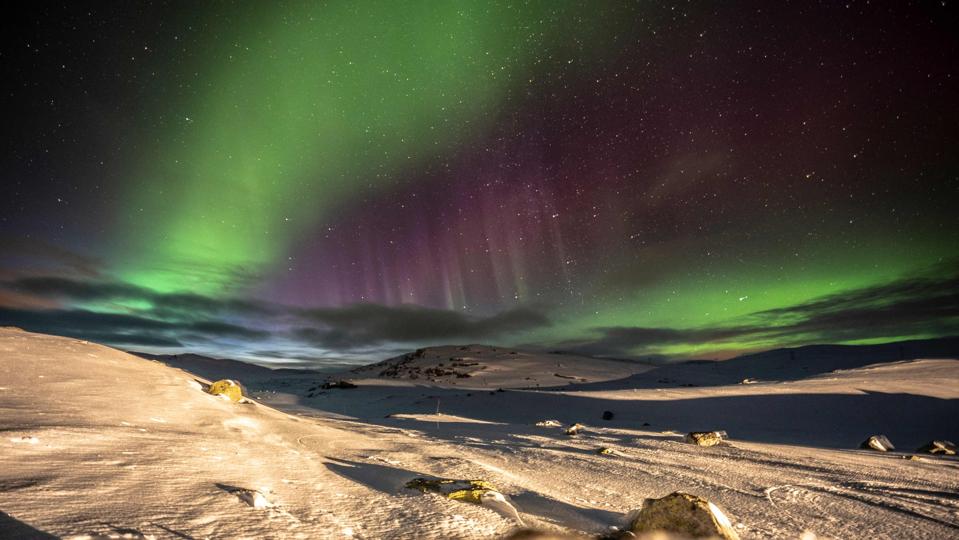Topline
A group of states in the northern U.S. may have the opportunity to see the northern lights Monday, with a slight chance for some radio blackouts early this week, according to the National Oceanic and Atmospheric Administration.
Key Facts
Auroral activity is forecast with a Kp index of three on a scale of nine for Monday night, suggesting the northern lights will move farther from the poles and be “quite pleasing to look at” for those in the right areas.
It’s likely the aurora borealis won’t be as visible in the U.S. through Wednesday, with an expected Kp index of two forecast for the next two days, according to NOAA’s three-day forecast.
There is a chance for some minor to moderate radio blackouts over the next three days, potentially impacting some high-frequency radio communications, NOAA said, though large-scale radio outages are unlikely.
Where Will The Northern Lights Be Visible?
The aurora borealis will be most visible in Alaska and northern Canada, with a minimal opportunity, marked by NOAA’s view line, expected in several states along the Canadian border. A lesser chance of seeing the phenomenon is forecast in northeastern Washington, northern Idaho, Montana, North Dakota, northern Minnesota, northern Wisconsin and Upper Michigan. (See map below.)
What’s The Best Way To See The Northern Lights?
NOAA recommends traveling to a north-facing, high vantage point away from light pollution to see the northern lights, which are best viewed between 10 p.m. and 2 a.m. local time.
What’s The Best Way To Photograph The Northern Lights?
Photography experts told National Geographic it’s best to use a wide-angle lens and tripod if using a regular camera. Settings should also be adjusted for lower light images, with an aperture or F-stop of four or less. With a smartphone, NOAA recommends turning on night mode and disabling flash.
Key Background
The northern lights were seen as far south as Texas and northern Florida last year, shortly after a “solar maximum” was achieved in October, NOAA and NASA said. A “solar maximum” indicates a peak in solar activity and occurs throughout the sun’s 11-year cycle, during which a “solar minimum” is also reached. This peak in activity results in more coronal mass ejections and solar flares, and the electrons from these events are the cause of auroral displays. The electrons intersect with oxygen and nitrogen in the Earth’s atmosphere, causing them to become “excited” before producing a swirling array of lights. A peak in solar activity will likely persist into early 2026, forecasters said.

